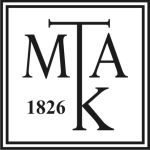A kiskorú gyermek tartása a házasság fennállása alatt és felbomlása után 1938 és 1945 között Magyarországon
DOI:
https://doi.org/10.15170/DIKE.2018.02.02.02Kulcsszavak:
family law, maintenance, minor, judicial practiceAbsztrakt
During my research I examined the relevant acts in connection with child support between 1938 and 1945 in Hungary and most importantly, the material of the National Archives of Hungary Zala County Archives. I will draw a picture about judicial practice through the court decisions of Zala County. First of all, the father was the number one obligated person to support his children, and if the parents were separated in some way then the parents were to contribute to supporting the child together, in accordance with their financial situation. Yet in practice, or at least in all the examined cases the father took care of the expenses alone. The obligated person should pay maintenance firstly in his own household, and if it was not possible then the child lived in another household and the obligated person covered the expenses. There was no presumption of need so the obligated person should only support the child if he or she had no income or fortune. Provided he or she had fortune, then the father managed it and he took care of child support as well, but not from his own money but from the child’s assets. The amount of maintenance should cover the expenses of the upbringing of the child according his or her social status, education and studies. In the cases of legitimate children, the Orphan’s Court decided after 1930 primarily in the matter of child support and the Tribunal only decided on the matter if it was urgent and if it had enough data, but the Orphan’s Court followed the same practice as the Court.
Downloads
Megjelent
Hogyan kell idézni
Folyóirat szám
Rovat
License
Open Access politika: A folyóirat nyílt és korlátlan hozzáférést biztosít a tartalmához. Bárki jogosult a közzétett tartalmak letöltésére, felhasználására, nyomtatására, terjesztésére és/vagy másolására a nemzetközileg elfogadott tudományetikai normáknak megfelelően.
A folyóirat (Kiadó) szabadon elérhetővé és letölthetővé teszi a cikkeket saját hivatalos, kiadói honlapján, időbeli korlátozás nélkül. A cikk első közzétételének joga kizárólagosan a Kiadót illeti. A Szerző elfogadja, hogy a Kiadó a cikket oly módon teszi közzé, hogy a cikk felhasználási jogaira bármely harmadik fél számára az első közzétételt követően a Creative Commons Attribution-NonCommercial-SharAlike 4.0 (CC-BY-NC-SA 4.0) licenc feltételek az irányadók. A Kiadó e licensz keretében átalakíthatja a cikket tetszőleges elektronikus formátumba, a cikket számítógéppel vagy elektronikus adathordozóra másolhatja. A Kiadó a cikk közlési és felhasználási jogát megoszthatja bármely harmadik féllel, illetőleg e jogokat bármely harmadik féllel közösen gyakorolhatja. A Kiadó a Szerző nevében felléphet a cikkel kapcsolatos jogsértések, jogtalan felhasználás és szellemi tulajdon sérelmét jelentő magatartások esetén. Gyakorolhatja mindazon jogokat, amelyeket a fent megjelölt „CC BY NC SA 4.0” licenc feltételek lehetővé tesznek harmadik felek számára.










